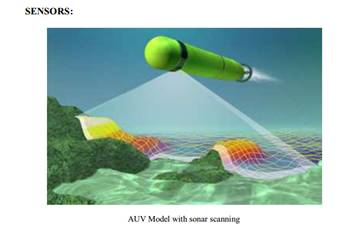
Becky Oh, President & CEO of PNI Sensor Corporation, chatted exclusively with Electronic Products about her livelihood, innovative skillset, and what technologies are changing the world as we know it. Oh also delineated the forms of technology that are being employed in the manufacturing of the search drone set to scour all remnants of Malaysian Airlines flight 370.
Electronic Products: What inspired you to first pursue the field of technology?
Becky Oh: I always enjoyed math and science but it was my physics teacher in high school that encouraged me to pursue engineering.
EP: In college, what was your major?
BO: My undergraduate major was in electrical engineering and computer science from MIT, and then I continued my education at Cornell with an MS in Computer Science.
EP: Did you intern at any companies while still in school, before landing your first job?
BO: I worked at various labs at MIT under the UROP (Undergraduate Research Opportunities Program).
EP: How is PNI changing the world in regards to cutting-edge development and technology? Are there any special innovations that PNI is currently working on?
BO: For over 20 years we have worked with inertial sensors and developed sensor fusion algorithms for various navigation and tracking systems for military and consumer applications. Inertial navigation using only sensors (also called dead reckoning) is needed by AUVs for precise location and heading under the ocean where GPS signals are not available for navigation. We've taken our algorithm know-how and have applied them to consumer-grade MEMS inertial sensors readily available in our cell phones, enabling navigation even when GPS signals are not available such as indoors. This required us to develop algorithms that enabled a $1 consumer grade inertial sensor to perform as well as a $10,000 one.
EP: Please discuss how magnetometry/compassing is aiding in the search for the remnants of the Malaysian Airlines plane.
BO: As this search is occurring in very deep water, the tools used are deep-water autonomous underwater vehicles (AUVs). Once the AUV is sent into the narrowed search area, magnetometry is part of a navigation solution that is necessary to guide the vehicle and enable the imaging of the ocean floor through the sidescan sonar.
EP: What type of equipment will the wreckage-searching equipment be made from? And are there any special sensors that will be integrated into the drone’s system that will have specialized functionality?
BO: For example, autonomous underwater vehicles (AUVs) are currently being utilized in the search efforts. Both the Bluefin 21 and the Remus 6000 are currently deployed. These specific research vehicles are designed to operate in full ocean depth. While PNI sensors are not in these particular vehicles, our technology is used in sidescan sonar such as the L3 Klein 3000 DEEP and other manufacturers' AUVs. The magnetometer, or compass, is required to ensure that all areas of the search location are covered effectively. Think of a lawnmower – you want to ensure that the lawnmower is moving in straight lines with little overlap so as to make your mowing as efficient as possible and you don’t miss any blades of grass. The compass works to orient the heading of the AUV to ensure the efficient coverage of the search area. These deep water AUVs require a very precise navigation system, as they don’t often come to the surface to access GPS for orientation or error correction.

Sample graphic of how this is being deployed: Source: http://auvac.org/uploads/publication_pdf/Autonomous-Underwater-Vehicles%20seminar.pdf
EP: Are PNI’s developments integrated into other military technologies?
BO: Yes, we have PNI technology integrated into ground robotic vehicles that serve as first responders or for defense applications such as defusing bombs for the U.S. Army. For example, the iRobot packbot, which includes PNI sensors, was deployed to the Fukushima Daiichi nuclear plant in Japan, where intense levels of radiation made it increasingly dangerous for human rescue workers to operate. Our compasses are also integrated into laser range finders which provide an exact distance to targets, and are used for military reconciliation and friendly fire.
EP: What’s one of the biggest trends in technology that you’re currently digging?
BO: The availability and accessibility of sensors as well as the ability to easily aggregate the data from these sensors allows us to provide information that was not available in the past. For example, by using the inertial sensors already in our phones, we have the ability to track someone and have it anticipate our needs…being a true personal digital assistant.
Advertisement
Learn more about Electronic Products Magazine






